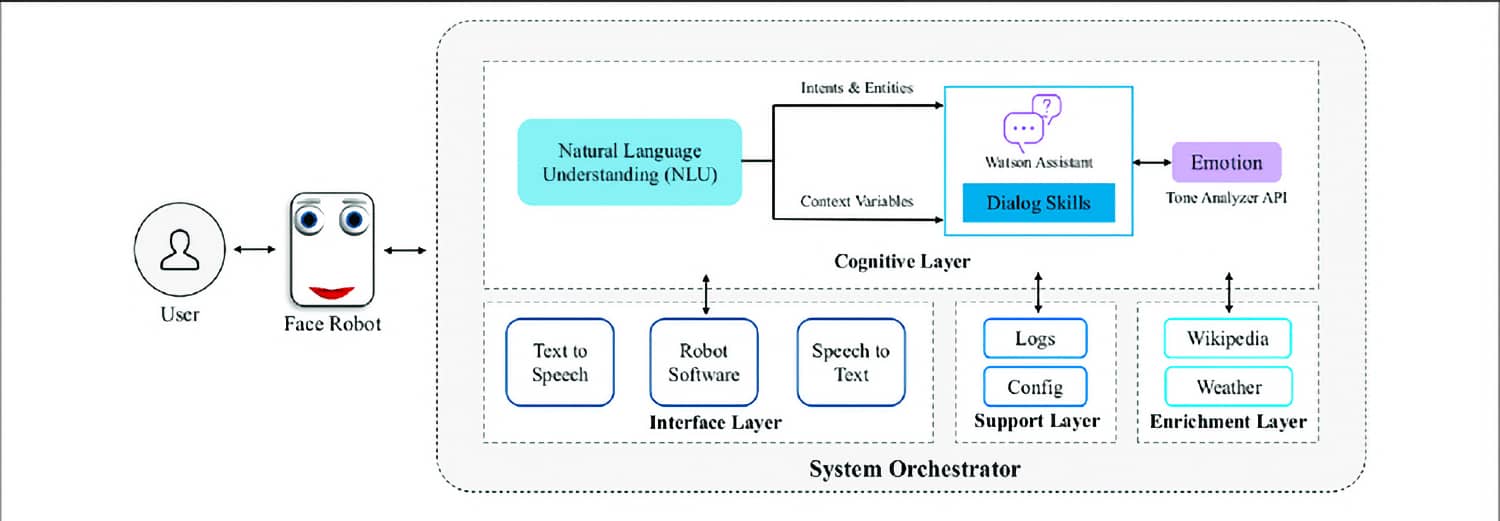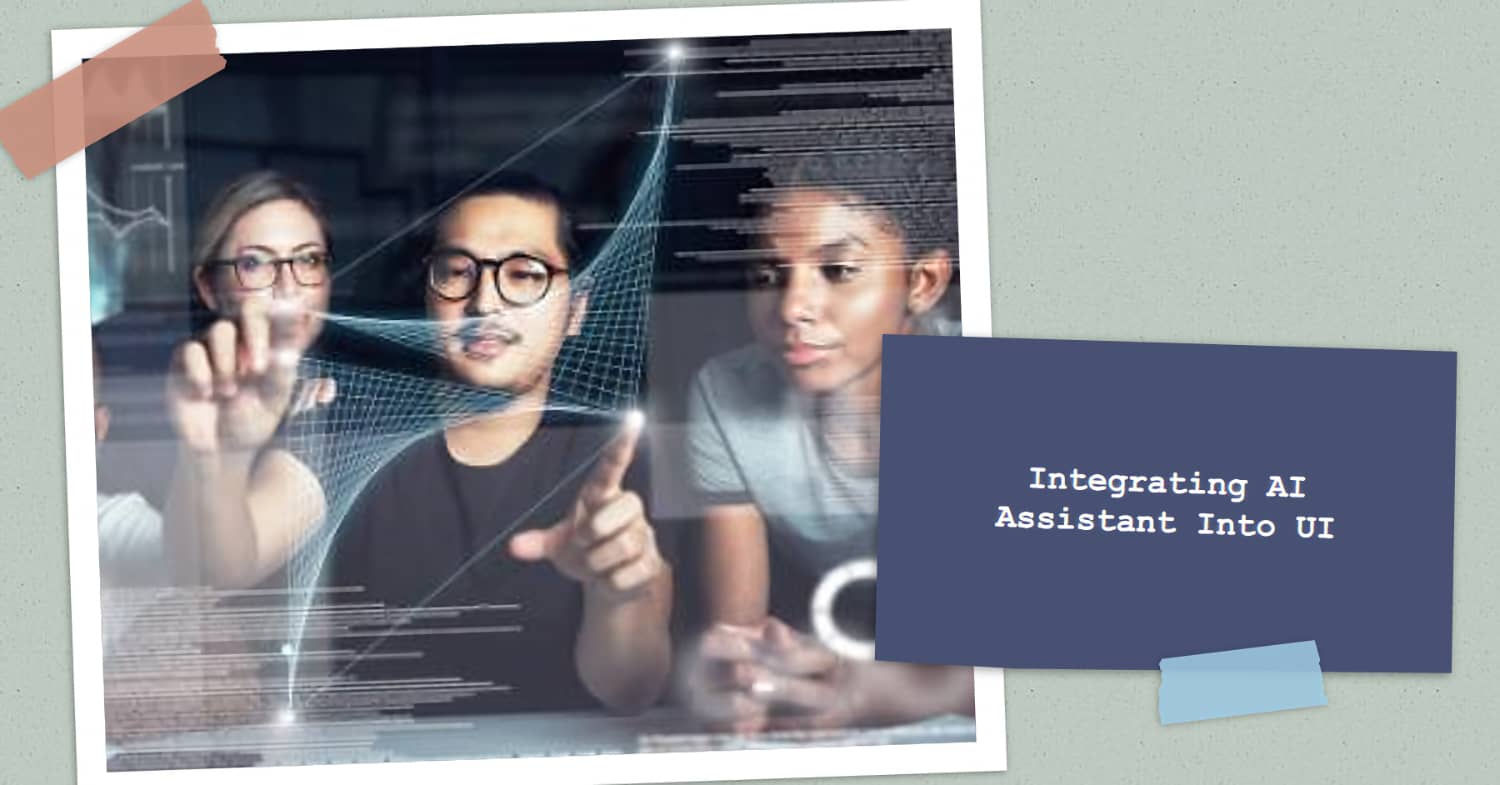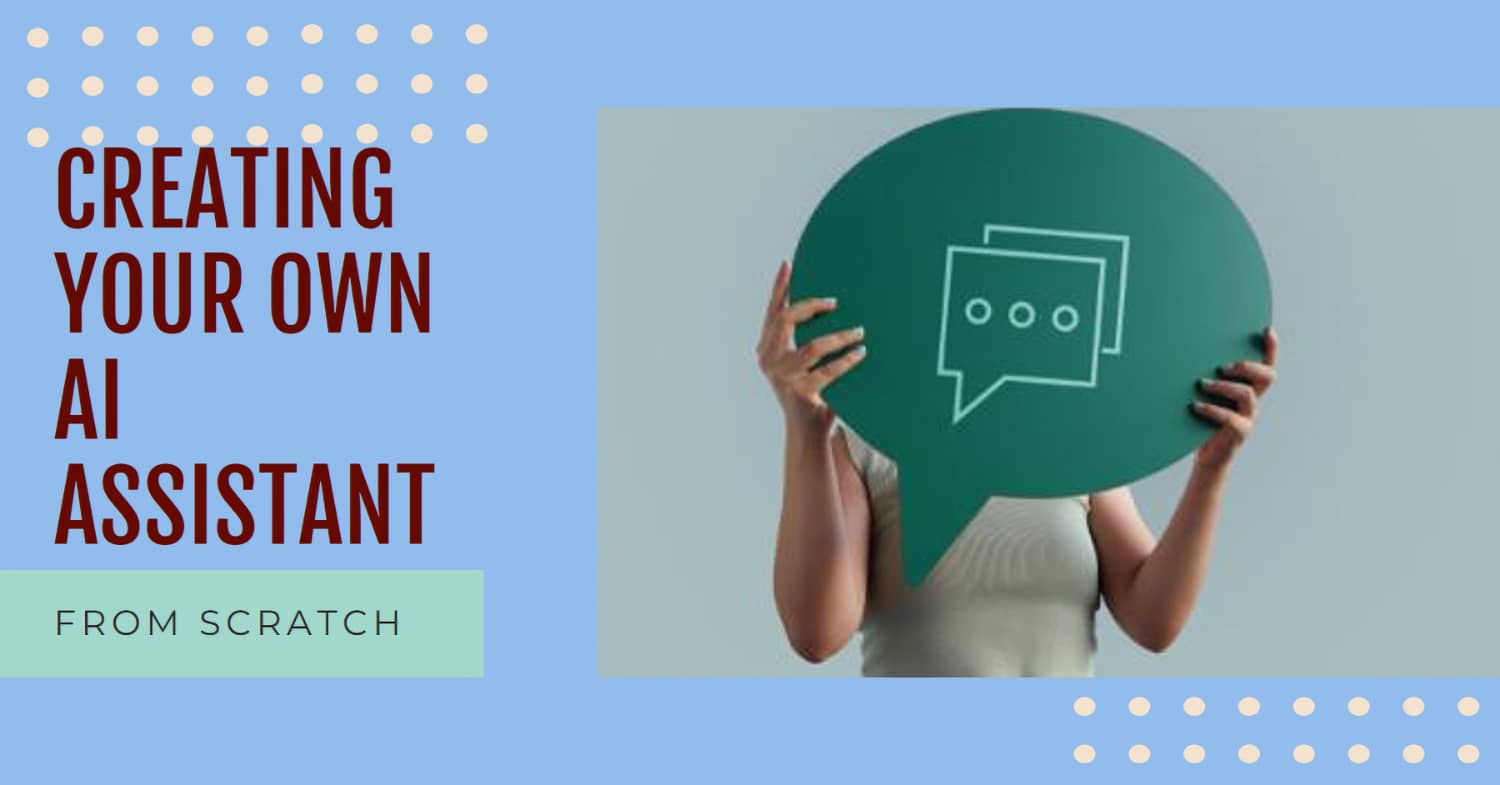Have you ever wondered what goes on behind the scenes when you ask Siri a question or place an order with Alexa? Artificial intelligence (AI) assistants have become ubiquitous in our daily lives, simplifying tasks and enhancing productivity. However, few truly understand the intricate technical architecture empowering these remarkable tools.
As per recent projections, the global AI assistant market is expected to reach $46.2 billion by 2030, highlighting the tremendous growth opportunities in this space. With capabilities spanning conversational AI, machine learning, and predictive analytics, virtual assistants are transforming customer experiences across industries. However, developing an effective AI companion requires strategic planning and meticulous execution.
This comprehensive guide aims to shed light on the crucial yet complex process of how to create an AI assistant. We will navigate through the architectural blueprint, analyzing the integral components like natural language processing (NLP), data pipelines, machine learning models, and user interface design. You will discover how to train AI assistants to comprehend requests, communicate naturally, and even showcase creativity within certain bounds.
By the end of this article, aspiring developers will gain practical insights into crafting their own AI sidekicks, ready to simplify daily tasks and unlock new possibilities.
Understanding AI Assistant Architecture
Behind the conversational prowess of Siri, Alexa and other seemingly intelligent AI assistants lies a complex architectural system functioning in perfect harmony. Developers seeking to build their own AI companion must first comprehend the integral components governing these artificial brains.
The anatomy of a typical AI assistant comprises:

Natural Language Processing (NLP)
This AI subset focuses on facilitating natural human-computer interaction. NLP algorithms empower assistants to decode speech and written text, comprehend semantic meanings, and generate relevant responses.
Popular NLP libraries used are spaCy, NLTK, Rasa and, more recently, transformer-based models like GPT-3.
Machine Learning (ML)
ML lies at the heart of AI assistants, enabling them to dynamically learn patterns from data without explicit programming. As the assistant absorbs more data through interactions, ML models help to improve its performance.
ML algorithms like regression, clustering and neural networks are leveraged to enhance capabilities.
Knowledge Graph
A knowledge graph is a structured semantic representation of different real-world entities and the relations between them. It serves as a vital knowledge source for the AI assistant to respond accurately to user requests.
Dialog Manager
This module handles the coordination between other components and maintains contextual flow across long conversations. It determines priority requests, gathers essential info from databases, and provides appropriate responses.
By gains strong command over these building blocks, developers can craft truly smart AI assistants ready for the real world!

Choosing the Right AI Platform
Selecting an optimal platform is pivotal in the AI assistant creation process, empowering developers to build advanced capabilities leveraging state-of-the-art resources. The platform combines pre-trained models, development tools, cloud infrastructure, and support to simplify rapid prototyping and deployment.
When scouting for options, one must consider aspects like:
Use case specifications
Expertise level of development team
Scalability needs
Data privacy policies
Budgetary constraints
Let's explore some of the most popular platforms for embarking on your journey of making an AI assistant:
1. IBM Watson Assistant
With over 8,000 customers across 20 industries, IBM Watson helps enterprises integrate conversational AI across their business systems. It offers:
Conversational flows: With dialog tools to map complex conversations spanning over 75 nodes
Customizable bot training: Option to use pretrained industry models or train from scratch
Integration capabilities: Seamless integration with business apps through API
2. Amazon Lex
A fully managed AI service, Amazon Lex powers chatbots leveraging automatic speech recognition (ASR) and natural language understanding (NLU).
Chatbot templates: Pre-built bot templates for quick setup
Voice and text support: Recognizes and responds in voice and text requests
Scalability: Auto-scaling infrastructure to support high-volume interactions
3. Dialogflow CX
Trusted by leading brands like Hotels.com and Alaska Airlines, Dialogflow helps design intuitive chatbot conversations through visual diagram flows.
Agent assist tool: Recommends responses to improve agent productivity
Analytics dashboard: Insights into conversation metrics to identify areas of improvement
Omnichannel deployment: Optimized for web, social media, telephony channels
The choice ultimately depends on the scope, timelines, and resources allotted for your AI assistant development project. One can even evaluate multiple platforms through trial plans to determine the best fit. Let your creative aspirations guide you to shortlist options aligned with your grand AI vision!

Data Collection and Preparation
The effectiveness of any AI algorithm relies heavily on the quality of data used to train it. Hence, when creating an AI assistant, ensuring clean, relevant and unbiased datasets is pivotal.
But what constitutes optimal data for virtual assistants? Let's find out:
Sources of Data
Public datasets: Text corpus like Wikipedia or Reddit discussion threads
Web scraping: Extracting information from websites and online repositories
Human annotations: Manual labeling of textual data for supervised learning
Conversation logs: Chat transcripts between users and human agents
Data Collection Tips
Prioritize diversity spanning different formats, topics, linguistic styles
Ensure collected data has appropriate context for situation comprehension
Focus on quality over quantity as irrelevant data hampers assistant's performance
Respect user privacy by anonymizing any personal identifiable information
Data Preprocessing
Raw data rarely comes ready for direct usage. Tasks like cleaning, normalization and formatting help enhance quality.
Language detection: Identifying language of textual data
Spell correction: Rectifying spelling mistakes
Lemmatization: Grouping together word variants
Vectorization: Conversion of text into numeric vectors
With meticulous data practices, developers can maximize their chances of creating a smart, productive and trusted AI assistant.

Training and Fine-tuning the AI Assistant
Once quality data is secured, the next crucial phase is effectively training machine learning models to create a robust AI assistant. This process aims to help assistants accurately interpret requests and provide relevant responses.
Training AI Assistants
Similar to teaching a child, developers need to gradually feed labeled data to the AI to enable understanding of language nuances and patterns. Based on this data, the assistant correlates inputs to appropriate outputs.
Training data must cover diverse topics, formats, linguistic styles and complexity levels expected during conversations. Real-world case studies and use cases should be emphasized.
Fine-tuning Assistants
Instead of training models from scratch, developers can optimize time and resources by fine-tuning pretrained models like GPT-3.
Fine-tuning involves:
Using smaller dataset more relevant to specialization
Running fewer training iterations
Customizing certain layers rather than entire model
This allows retaining pretrained knowledge while adapting models for improved performance on specialized tasks.
Ensuring Continual Learning
As user interactions evolve, so should AI assistants. Continuous training enables assistants to stay updated, enhancing their vocabulary, understanding, and conversational abilities over time.
Regular monitoring, testing and tuning allows identification of weak areas to focus improvement efforts. Virtual assistants designed for continual learning better serve users in the long run.
With robust training protocols and infrastructure in place, developers can fulfil their aspiration of creating an AI assistant ready to take on real-world challenges!

Integrating the AI Assistant into User Interfaces
For end users to truly enjoy the perks of AI assistants, integrating them seamlessly into intuitive interfaces is key. Based on their specialization, assistants can be embedded into:
Conversational Bots
Chatbot interfaces allow users to engage in text or voice conversations with AI assistants. They combine language processing abilities with dialogue tools.
Help users easily access information or services through natural conversations. However, certain limitations exist on complexity levels.
Voice Assistants
Voice-enabled AI solutions like Alexa allow hands-free control through speech. They live in smart speakers and are optimized for shorter requests.
Deliver convenience by operating devices/applications through voice commands. However, error rates can increase with ambient noises.
Embedded AI Assistants
Directly integrating assistants into product workflows allows AI-powered support during tasks. For instance, the AI Copilot in Github provides suggestions during programming.
Enable highly context-aware assistance attuned to specific use cases. However, development effort increases considerably.
Best Practices
Regardless of interface paradigms, creating an intuitive user experience is vital for acceptance:
Ensure seamless integration into existing ecosystems
Design for natural conversational flow
Focus on simple yet appealing visual aesthetics
Continuously test with real users and gather feedback
Provide transparency into system's confidence on responses
Crafting the perfect interface for humans to interact with AI entails balancing user needs, business goals and functional potentials of the assistant.
Ethical Considerations and Bias Mitigation
With AI assistants handling sensitive tasks, addressing ethical dilemmas and preventing unfairness is imperative. Especially in domains like healthcare, law enforcement and employment, biased AI decisions can have serious ramifications.
Some strategies to promote fairness include:
Mitigating historical biases in data
Real-world data often reflects societal biases along gender, racial and religious lines. Such skewed datasets get propagated through AI systems, producing prejudiced results.
Techniques like data augmentation and controlled training data help alleviate bias. Having greater diversity in teams generating datasets also helps.
Enabling transparency & explainability
Insights into an AI system's capabilities and thought processes enhances trust among users. Providing transparency into factors influencing each decision through tools like local explainability helps justify outputs.
Incorporating human oversight
For high-stakes sectors, having humans monitoring AI assistant's judgment provides reliability and accountability. This could involve manual reviews before enacting automated decisions.
By embedding ethical considerations throughout the workflow - from problem formulation to continuous testing - AI developers can restrict their assistants from inadvertently causing harm. With conscientious effort, AI will usher in an equitable future lifting society as a whole rather than worsening divides!
Real-world Applications and Future Directions
Beyond the hype, AI assistants are driving transformational change across industries. Furthermore, constant research promises to uncover even greater future potential as the technology evolves.
Current Applications
Business Operations - By automating mundane tasks, AI assistants help boost team productivity and efficiency. An example is Cogito providing real-time guidance during customer calls.
Healthcare - Intelligent assistants like Sensely assist doctors by tracking patient health data and medication adherence. This expands care access.
Smart Homes - With Alexa and Google Home permeating households, AI facilitates automation through intuitive voice commands improving convenience.
Education - AI tutors like Emily provide personalized learning accounting for individual strengths and weaknesses.
Emerging Trends
Looking ahead, integration of AI with other exponential technologies could dramatically enhance assistants' capabilities:
Robotics: Physical embodiment through robotic forms for enhanced productivity
AR/VR: Immersive environments augmenting assistants' support
Blockchain: Credential verification and coordination across decentralized network
The future looks bright for this set of technologies collectively making our lives easier.
So are you ready to be part of this transformation by creating your own specialized AI assistant? The time is ripe, and the tools are ready - now it is up to you to take that leap!
Crafting Your Own AI Companion - Easier Than You Thought!
Through this extensive guide, we unveiled that while multi-faceted, developing an AI assistant is very much within reach for motivated developers.
The key is judiciously piecing together the right building blocks - robust data pipelines, optimized machine learning models and intuitive interfaces. Leverage proven techniques around training reinforcement and testing to ensure your assistant keeps improving and providing value.
And importantly, embed ethical considerations throughout the process, restricting biases and preserving transparency. With AI infiltrating critical areas like healthcare and justice, developer responsibility around minimizing harm is paramount.
The domain possibilities for AI assistants are endless - from personalized life organizers to medical diagnosticians to gaming bot participants! Customize them to your needs and let creativity guide you in shaping the next AI innovation.
So why delay bringing your inventive ideas to life? Follow the strategies covered to get your own AI assistant up and running in no time. And remember, start small but think big! Before you know it, your creation could be the next Siri captivating audiences.


